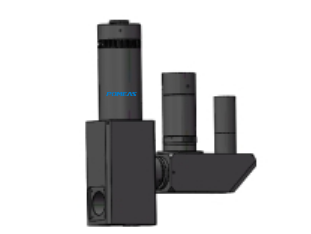A quick look at what dark field/bright field/polarization imaging is all about
In the field of industrial vision measurement, choosing the right optical imaging technology often determines the success or failure of an inspection. Bright field, dark field and polarization, as three basic but distinctive observation methods, show very different imaging effects in different application scenarios. According to statistics, in the machine vision system applications, more than 70% of the imaging quality problems stem from the improper choice of lighting. Appropriate imaging technology not only improves image contrast, but also reduces the complexity of subsequent image processing, which is especially critical in the field of micron-level precision inspection.


I. Brightfield imaging: the “workhorse” of industrial inspection
Bright field imaging is the most basic and commonly used optical imaging technique. Visible light is utilized to directly transmit or reflect the sample, creating image contrast through differences in light absorption or reflection in different areas of the sample.
Under bright field illumination, the light source is located within the reflective cone of the camera's field of view (high angle illumination). Sample characteristics are shown as:
① Areas that absorb/scatter light appear dark;
② Areas that reflect/transmit light appear bright;
③ The background is generally bright.
II. Dark-field imaging: a “magnifying glass” for microscopic defects
Dark-field imaging is uniquely valuable when conventional bright-field fails to reveal the subtle structure of a sample. Direct light is blocked and only scattered or diffracted light from the sample is collected. Tilted illumination is created by special optical path designs such as the dark field diaphragm.
Manifested in dark-field imaging:
① The background usually appears dark;
② Only the edges or fine structures of the sample are highlighted;
③ Tiny structures are clearly visible against a dark background.
III. Polarization Imaging: A “Discriminator” of Crystalline Materials
Polarization observation utilizes the polarizing properties of light and is specifically designed to identify the birefringence of substances. At its core, it generates and detects changes in polarized light through a combination of a polarizer and a detector.
When polarized light passes through a material with birefringent properties:
① The crystal structure changes the state of polarization of the light;
② By analyzing these changes, the material properties can be identified;
③ The optical anisotropy of the sample is converted into visible contrast.
The essence of modern industrial inspection lies in the selection of the most appropriate “optical key” for each particular problem. Bright-field, dark-field and polarization imaging are not competing technologies, but complementary tool sets that together form the basic framework for precision vision measurement.
Product recommendation
TECHNICAL SOLUTION
MORE+You may also be interested in the following information
FREE CONSULTING SERVICE
Let’s help you to find the right solution for your project!


 ASK POMEAS
ASK POMEAS  PRICE INQUIRY
PRICE INQUIRY  REQUEST DEMO/TEST
REQUEST DEMO/TEST  FREE TRIAL UNIT
FREE TRIAL UNIT  ACCURATE SELECTION
ACCURATE SELECTION  ADDRESS
ADDRESS Tel:+ 86-0769-2266 0867
Tel:+ 86-0769-2266 0867 Fax:+ 86-0769-2266 0867
Fax:+ 86-0769-2266 0867 E-mail:marketing@pomeas.com
E-mail:marketing@pomeas.com
